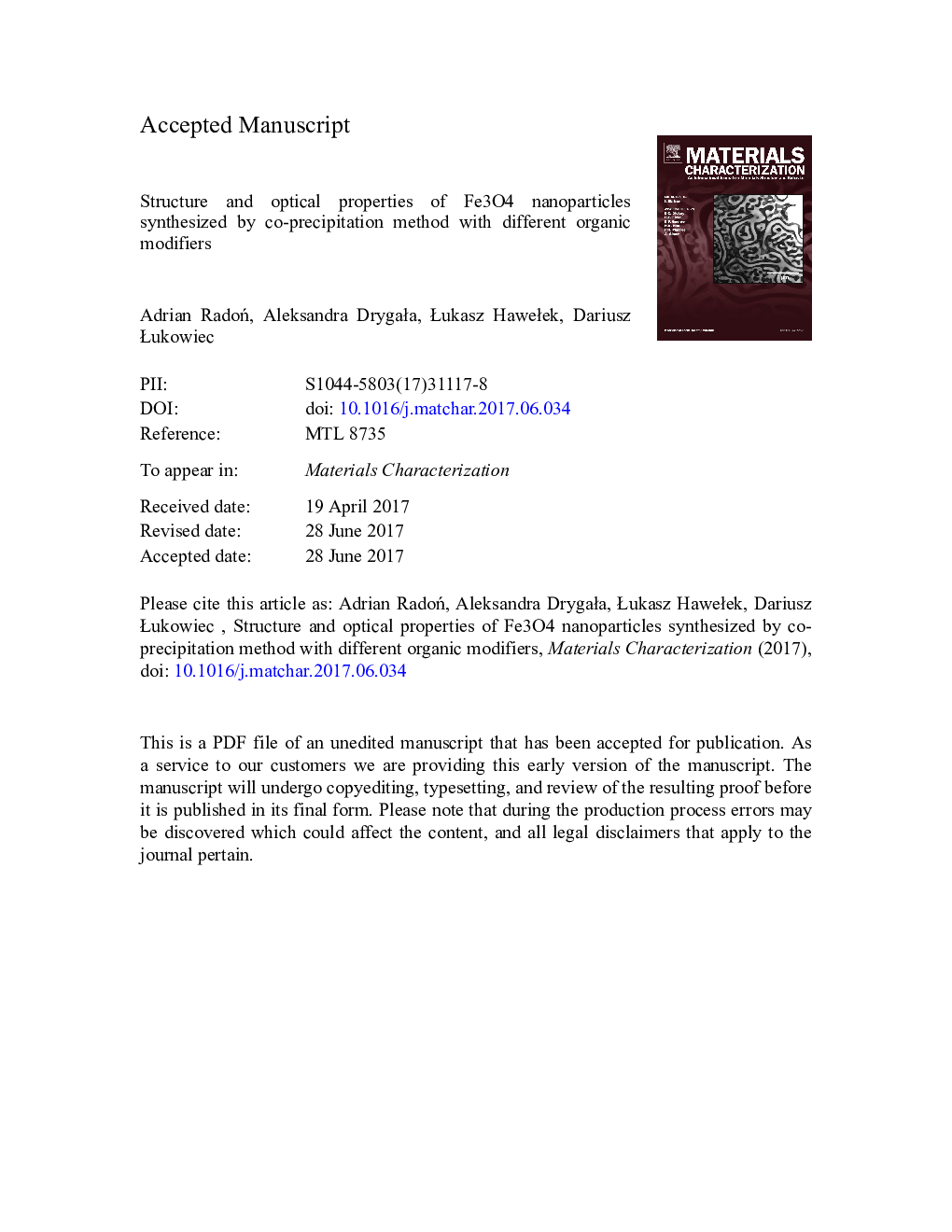| Article ID | Journal | Published Year | Pages | File Type |
|---|---|---|---|---|
| 5454579 | Materials Characterization | 2017 | 23 Pages |
Abstract
Synthesis and modification of magnetite nanoparticles were carried out by co-precipitation method. The influence of different organic modifiers on structure and optical properties of Fe3O4 nanoparticles has been studied in detail. The X-ray diffraction method, transmission electron microscopy, Fourier transform infrared spectroscopy and UV-visible spectroscopy were used to determine crystallite size, structure, morphology and optical band-gap energy. The magnetite nanoparticles with different crystallite size at range of 2.9-12.2Â nm were obtained by the modified controlled chemical co-precipitation method. The results showed that the Fe3O4 nanoparticles synthesized in solution containing tartaric acid were the smallest and had the highest value of optical band-gap energy (3.01Â eV). The use of dextrin allowed obtaining nanocomposite, in which magnetite nanoparticles were dispersed in polysaccharide matrix. It was confirmed that with the decrease in the crystallite size the value of the optical band-gap energy increases, which is related to quantum phenomena. Additionally, shift of characteristic peaks from FeO bond in Fourier transform infrared spectra were observed, what is also associated with change of the nanoparticles size.
Keywords
Related Topics
Physical Sciences and Engineering
Materials Science
Materials Science (General)
Authors
Adrian RadoÅ, Aleksandra DrygaÅa, Åukasz HaweÅek, Dariusz Åukowiec,
